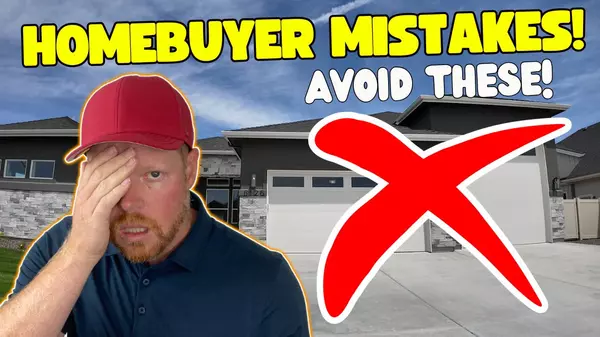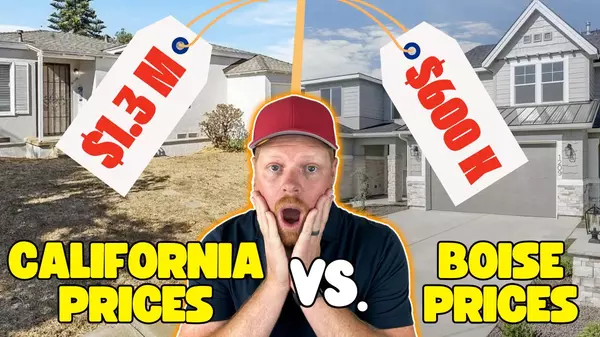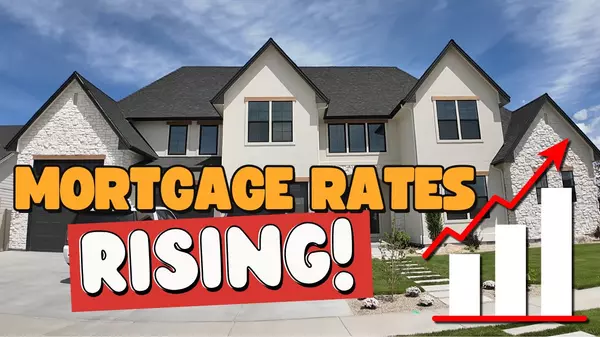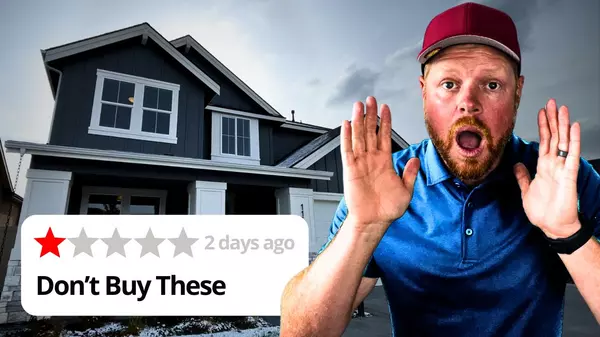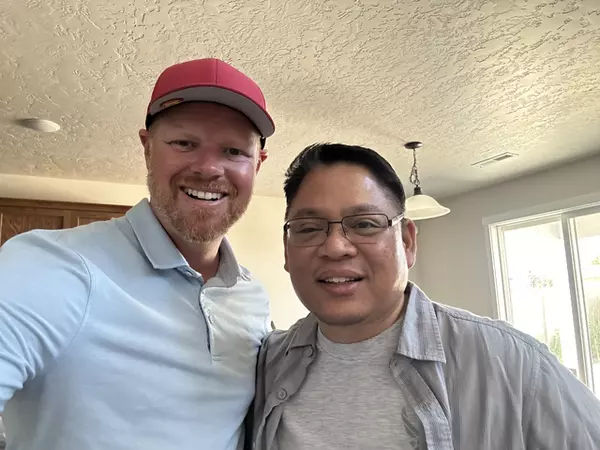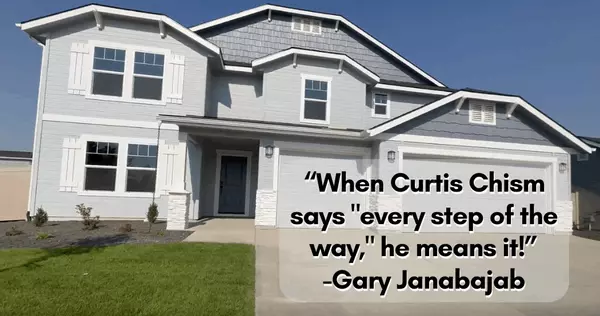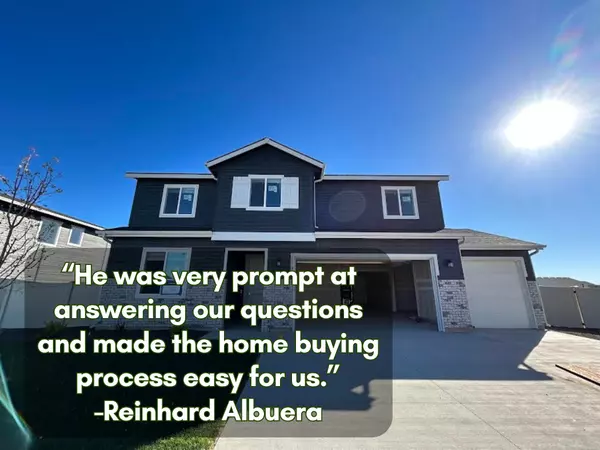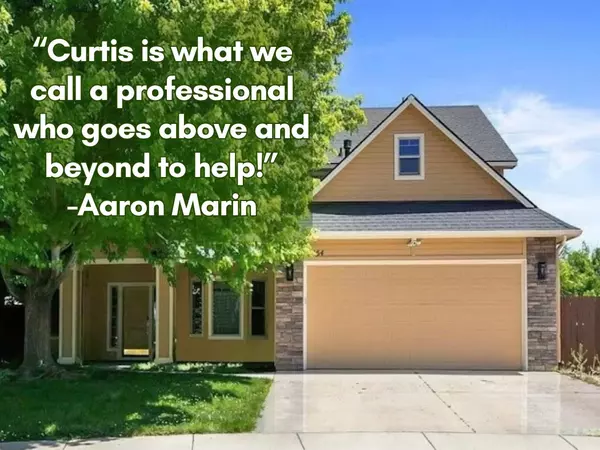Secrets of Buying a New Construction Home in Boise Idaho by a Construction Manager
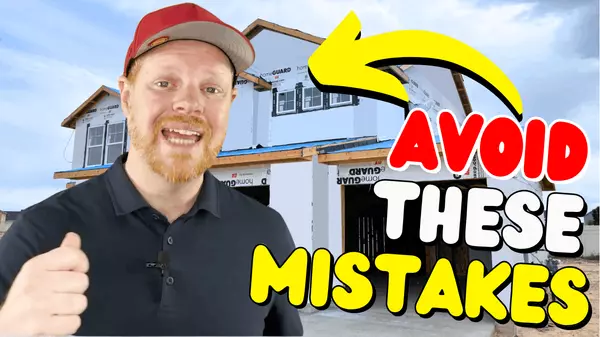
If you're looking to move to the Boise, Idaho area and you're considering new construction homes, consider this video your master class on everything you need to know about buying a new construction home in the Boise and Treasure Valley area. My name is Curtis Chism, and I have a master's degree in construction management from the University of Southern California. I used to build high-rises and luxury apartments and condos in downtown San Diego. I also have my general contractor's license back in California, but I moved to Idaho a couple of years ago to find a better life for my family, and we absolutely love it. I love helping people just like you make the move here. I really do specialize in new construction homes. It's been a passion of mine my entire life—building things and then building homes, and now helping people buy new construction homes up here in Idaho. In fact, of the 12 contracts that I have open while recording this video, they're all new construction homes. About 90% of the buyer side of my business is new construction homes, so it's a huge specialty of mine, and I love talking with people about new construction and helping them get into these beautiful new construction homes. So if that's you, we’re going to be covering things like: - The incentives that are available when you're buying new construction homes- Whether or not you can make contingent offers on a home- The accountability that's needed for the builders when you're buying a new construction home here in the Boise, Idaho area Let's get after it right now. Terminology of New Construction Homes To start, let’s cover some terminology of new construction homes so you've got a good baseline of what I’m going to be talking about in this video. Builders are going to refer to two types of options for you with new construction homes, and it's going to be a little confusing because oftentimes they’ll use the phrase "when you build with us." Build Homes vs. Spec Homes Now, if you're buying a new construction home, you might think, "Aren't I building with you no matter what? It's a brand new home; I'm building it." Well, that’s not the case. When they refer to a build home or build project, or "when you build with us," they're referring to the process of you actually going and selecting the lot that you want, the model home that you want with the right floor plan, the structural options, the finishes, and then that goes into the city and you build a semi-custom home with them. That process takes a while—typically 6 to 9 months. Quick Move-In or Spec Homes Now, you're thinking, "What's the other option?" Of course, there are quick move-in homes, spec homes, or move-in ready homes. These are homes that are either on the market right now, ready to buy and move into within the next 30 days, or they might be under construction and are four, five, or six months from completion. Sometimes they’re not even under construction yet but are still considered a quick move-in home and might be 8 to 9 months out. With these quick move-in or spec homes, there are basically no customizations allowed. The builder has already pre-selected everything about that home: the types of garages, maybe an RV garage, the types of finishes in the home (quartz vs. granite), the type of flooring, and you really do not get a say. With the build homes, you get to select almost everything in that home. Benefits of New Construction Homes vs. Resale Homes Now, why would you want to buy a new construction home versus a resale home? I like to compare buying a new construction home to buying a new car, but there are some benefits with it. Value and Longevity When you buy a new car, as soon as you drive it off the lot, it depreciates 25%. New homes do not do that; they hold their value. You have a brand new home that no one has lived in before, just like that new car. With a new construction home, you know exactly what that history is because you're the first one owning that home. With a brand new home, you also get brand new systems like your HVAC system, AC, furnace, roof, flooring—everything is brand new. You're not worried about it breaking down in 5 to 10 years or less with a resale home. You’ve got some good longevity out of all those things—probably a good 15 to 20 plus years before you have to replace them, assuming you maintain them correctly. Modern Layouts and Energy Efficiency With brand new homes, you also get the most energy-efficient homes on the market and the most modern layouts with the most modern finishes. Even homes built 15 to 20 years ago might have finishes that were really popular at that time, like the Tuscan feel with lots of travertine. While that looks great, it’s starting to get a little dated versus the more modern white quartz that a lot of people are choosing now. Community and Warranties The interesting thing about new construction communities here in Idaho is that you get a wide mix of people living here. You have local Idahoans buying new construction homes, but you also have a lot of folks from out of state, like myself, living in these new construction communities. I bought a brand new home when I moved to Idaho, and my immediate neighbors surrounding me all came from other states as well. It’s actually really cool to move into a brand new community and not feel like an outsider because you're new to the area—everyone else is new to the area too. Warranties Another reason to buy new construction homes are the warranties that come with them. You're going to get a one-year standard building warranty with pretty much any of the builders that will cover almost anything that can go wrong with the home, except cosmetic finishes like if you bang a wall. Any of the main systems will be covered under that. Some builders will also offer an extended warranty on structural options, potentially 5 to 10 years, and major systems like your roofing, AC, and furnace might carry a longer warranty—anywhere between 5 to 20 years. The Process of Buying a New Construction Home Now, let's talk about the process of buying a new construction home. This section will refer to the build process where you are selecting the lot and building a semi-custom home with the builder. A spec home will be a condensed version of this. Selecting the Lot When you purchase a brand new construction home, you are contracting with a builder here in Idaho. You get to select your lot from the lots that have been released. Some things to keep in mind when selecting a lot: popular lots here are homes with a driveway facing south, as the sun helps melt off any snow, or a driveway facing west for the same reason. These orientations also provide better shade in your backyard. Probably the worst lot to have is one with a driveway facing north because that snow and ice in the winter take a long time to melt off. Selecting the Model and Structural Options Once you've selected your lot, you also get to select the model you want, the floor plan, and typically your structural options upfront. These options include choosing between a two-car or three-car garage, a flex room, an office or an extra bedroom, a formal dining room, or converting it into a bedroom, and more. These are your structural options. Showroom Appointment and Finalizing the Contract Once your structural options have been selected, we contract with a purchase price. Then you will schedule a showroom appointment and actually come to Idaho to see everything in person. During this appointment, you will select all your finishes in the home. While you can do this virtually, I recommend seeing everything in person to better understand the colors, textures, and feel. Finalizing and Starting Construction After your showroom appointment and finalizing the contract price, including any lot premiums, the builder can draw up the final plans and submit them to the city. This upfront process of design and city permitting typically takes about two to three months. Once that is complete, you're ready to start construction, and the fun part really begins. Understanding the Construction Timeline Now, this next part is basically about four to six months, so that's how we arrive at generally about six on the low end to about nine months total construction time for a new build project. Now, with most builders, not all, but you're typically going to have a preconstruction meeting before you actually dig on the home, just to make sure that they've got all the structural options in the right place, the floor plan looks good, you give the green light, and then they start digging, usually the next day. Initial Stages of Construction Once the digging process is underway, things can happen fast. They'll dig, they'll pour the foundations, and then all of a sudden, boom, the house is framed, and things are progressing really rapidly. Things kind of slow down because there's a lot of progress right up front, and things just visually change slower as the plumbing, electrical, and HVAC goes in. Pre-Drywall Meeting Before we hit the drywall stage, right after all the in-wall roughing is done, the electrical, plumbing, and HVAC systems, we typically have a pre-drywall meeting. That is actually on-site, in the home, walking through the home, checking everything, making sure that all the electrical is in the right place and everything looks good before they actually button up the walls and drywall. Again, that can be done virtually. Most of my clients end up doing it virtually, but you can also be here on-site and do it in person. Final Stages and Inspections After the drywall stage, that is really your last opportunity to do any sort of pre-inspection on the home. They rock and roll, and then as we head towards the finish line, usually about two weeks or so before closing, I highly recommend doing a third-party inspection. It does cost a few hundred bucks, depending on the home, usually between $400 to $550, depending on how big the home is, how many bedrooms it has, but that is where accountability really comes in. New Homeowners Orientation Typically, the builders are going to fix all those things prior to the New Homeowners Orientation. The New Homeowners Orientation is going to be done right before closing, usually within three to five days. This is essentially your final walkthrough, verifying any repairs that you requested were made and walking through how your home operates, all the major systems of the home, and the warranties that are included with the home. After the New Homeowners Orientation, we're going to sign off on everything. You're going to go to the closing table, either here in Idaho at the title escrow company or, if you're still not here in your other state, then you're going to do a mobile notary, sign all the loan paperwork if you're buying with a loan. If you're buying cash, there's not much to do. You just have to sign everything over a DocuSign, typically digitally, and then the home is yours, and you get the keys. Quick Move-In Homes With a quick move-in home, a lot of this is condensed. You basically have an opportunity to do a third-party inspection, we'll do that New Homeowners Orientation, you'll sign your paperwork, and you get your keys. Much more condensed process, but a lot fewer choices as well. Financial Considerations Next, we're going to talk about some of the financials around buying a home and what to expect so you're not disappointed. I've had a number of times where people get into buying the home and then they realize some issues around contingencies that just don't quite work. Expected Financial Requirements Let's talk quickly about what to expect as far as the money that you're going to need to come into buying a new home with the builders. Generally speaking, you're going to be coming in, if you're buying a quick move-in or spec home, typically somewhere between 1% of the purchase price to 4% of the purchase price. Let's just say you're buying a $600,000 home; 1% is going to be about $6,000, 3% is going to be $18,000. Now, if you're building, so you're actually selecting your lot and the home and going through the nine-month process, usually you're going to be required to come in with more money, typically around 10% non-refundable. So again, if you're buying a $600,000 to $700,000 home, you're looking around $60,000 to $70,000. Additional Financial Requirements for Upgrades Also, they are going to require for any upgrades you make in the showroom, you're going to have to come in with a percentage of that. That could range from anywhere from 10% to 50% of the upgrades you make. So, if you make $100,000 in upgrades, you could be coming in with an additional $10,000 to $50,000 of the upgrade selections that you made. Promissory Notes and Earnest Money Deposits There are a couple of builders around here that also tack on a promissory note. What this means is they're going to have your deposit somewhere between 4% to 10% that you have to come in with, and then they're going to tack a promissory note on there as well. So, if you back out of the contract, they have the legal right to come after you for an additional percentage. And what I've seen typically is another 6%. One builder here requires a 4% earnest money deposit with a 6% promissory note. Another one requires 10% with a 6% promissory note, so you're on the hook for 16% plus any showroom upgrades that you make. Non-Refundable Deposits Here's the big kicker with all these builders: typically, these are going to be non-refundable deposits. So, if you back out on the home for any reason, you're pretty much losing that deposit. Occasionally, they will allow financing contingencies, appraisal contingencies, but oftentimes with the builders, you just don't get that opportunity. You're really committed when you're going in on this. Contingent Offers Essentially, no builder allows contingent offers on the sale of a primary residence. So, if you're coming here and you're saying, "Hey, I'm going to buy cash with the proceeds of my home back in, say, California," most likely you're not going to be able to make a contingent offer. So, if you're unable to sell that home, you're on the hook to buy that home, and you're going to lose that earnest money deposit. Builders' Policies on Funds and Pre-Approval Some builders will still allow you to contract on the home and build over that nine-month process. They understand that you have to sell your home. It's not contingent, but they'll give you that time frame to sell your home and either have your down payment or your full cash purchase come from the sale of the home. Other builders will not allow that at all. They want to see that you have full funds or pre-approval for the full amount of that home. I've run into this a couple of times with folks with different builders where they get really frustrated by that process because they're planning to buy cash. They don't want to go through the whole approval process for a loan, but the builder has to see the money in a bank account. Now, it might be in your savings, your checking, or an investment account before they will allow you to contract on the home. So, just be aware that contingent offers are not really a thing on new construction homes here in Idaho. Builder Accountability and Quality Now, we're coming up on incentives that you can get here with builders here in Idaho, but I want to talk about accountability and what to expect when working with the builders here in Idaho. Now, we have a lot of quality builders here. They are building good homes. There are better builders, and there are not as good builders. You can go online and see all kinds of reviews about all these builders. Some are going to have horrible reviews, and some are going to have really good reviews. Importance of Representation You have to keep in mind that a lot of people, when they are leaving reviews online, are usually doing it because there's enough of a drive to do that, and it's usually because they're frustrated. So, you're going to get probably the worst reviews in a lot of builders here. Take some of that with a grain of salt. Reach out to me; we can talk through what I think are some of the better quality builders depending on your budget. There are more budget-friendly builders here and certainly higher-end, more luxury builders. So, there's a wide range of builders that we can discuss. But no matter what, you want to make sure you have representation through an agent like myself who has experience in the construction trades, with contracts, and with working with the builders here in Idaho. Because you do not save any money by trying to go direct through a builder, and you will be frustrated through the whole process. Builder Contracts and Customer Service I have had people reach out to me as they're midway through working with a builder on their contracts wanting me to represent them, but it's too late because the builders will not allow an outside party to come in and represent you once you've made contact with that builder. You have to know these builder contracts and what is in them. Some of the builders have their own contracts you have to sign; they don't use the standard Idaho contracts. Even if they do use the standard Idaho contracts, they likely have their own addendum or rider on there where you have to sign off that basically supersedes the main Idaho contract. Some of these builders actually pay their builder reps their commissions upfront. So, what happens there is, if you're an agent, you're a builder rep, and you're given your commission, what are you incentivized to do? You're incentivized to make that sale as fast as possible, --- By following this guide, you'll be well-prepared to embark on the exciting journey of buying a new construction home in the Boise and Treasure Valley area.
Read MoreLiving in Meridian Idaho - Complete Overview of Meridain Idaho [2024 UPDATE]
![Living in Meridian Idaho - Complete Overview of Meridain Idaho [2024 UPDATE],Curtis Chism - Idaho](https://cdn.chime.me/image/fs/cmsbuild/2024612/3/w600_original_fdbdf4e1-ff49-41b0-aa57-c30078f5c226-png.webp)
You're looking at moving to Boise, Idaho, and Meridian, Idaho keeps popping up as one of the top areas that you should be checking out. Well, in this video, we're going to be covering all things Meridian, Idaho. Living in Meridian I love living here in the Boise, Idaho area, and Meridian is my top spot for where I like to spend my time. We spend a ton of time here. My daughter goes to a homeschool hybrid program here in Meridian. We go to church in Meridian. We have a ton of friends that live here as well. We do a lot of our shopping also in Meridian. So if you're looking for somewhere that is very central, Meridian is certainly going to be the top spot for you. We're going to be covering the types of homes that you can get in Meridian, the types of shopping that are here, how centrally located it is, and some of the top communities and builders if you're looking for new construction that you're going to find here in Meridian, Idaho. My name is Curtis Chism, and I help people just like you make the move here to Idaho, and I absolutely love it. If you're looking to make the move to Idaho, just give me a phone call, text, or email, and I'll help you make that smooth move here to Idaho. Location and Accessibility Meridian, Idaho is so centrally located. It actually means "the center," and it's located just to the west of Boise, Idaho. If we pull up the map here, you can see here's Boise, and then of course you have Meridian. As you can see, it's really kind of right in the heart of everything. You've got Eagle just to the north of it, Kuna to the south, and then as you head west, you've got Nampa, Caldwell, and Star. If you're trying to get to any of these communities, you're going to generally be between 15 to 25 minutes, let's call it 20 minutes on average. But if you're looking to just stay in Meridian, a lot of folks that live in Meridian tend not to leave it too much because everything is right there for you. Again, you've got the shopping, schools, churches, great parks, recreational activities, and it's so close to so much of the outdoor nature that we all love when we're looking to move here to Idaho. It's a big reason why I moved here. Understanding Meridian: The Three Distinct Areas I want to give you a quick lay of the land of Meridian so you understand the different parts. There really are three distinct areas of Meridian: Central Meridian, North Meridian, and South Meridian. -Central Meridian: North of I-84 up to Ustick Road.-North Meridian: North of Ustick, essentially up to Chinden. Beyond Chinden, you get into Eagle.-South Meridian: South of I-84 before you hit Kuna. Shopping and Entertainment in Meridian Some of the top shopping that you've got here in Meridian is The Village. The Village is probably the number one most talked about shopping mall here in the Boise, Idaho area. I really love spending time at The Village. There's a great theater, a water fountain timed to music with cool lights, and during the wintertime, there's Santa and ice rinks, which are great for the kids. There's a local celebrity named Corbin Maxey with billions of viewers on YouTube. He lives here and does shows at The Village with his rescue reptiles or reindeer in the winter. There are also great restaurants like Sid's Garage, a taco place, a good coffee shop, and numerous high-end boutique stores like Lululemon, Anthropologie, GAP Factory Outlet, Buckle, Lush, and Sephora. In-N-Out finally came to Idaho and chose The Village, causing quite a buzz when it first opened. Not far from The Village, you've got the Boise Co-op, which is a Whole Foods alternative, and a Trader Joe's just up the street. Costco is also in Meridian, more in the north almost northwest part, convenient for Central and North Meridian residents. Comparing Meridian to Other Areas How does Meridian compare to other areas of the Treasure Valley? -Boise: With 275,000 people, it's an older, more established city with beautiful Craftsman homes in the North End, mid-century homes on the Boise Bench, and high-end areas like Harris Ranch and Warm Springs.-Meridian: Generally newer homes, mostly in the 20-25 year range up to present day construction, with more established neighborhoods featuring tree-lined streets.- Eagle: Known for higher price points and more established neighborhoods.- Nampa and Caldwell: Offer a mix of older homes and new communities. Schools in Meridian Meridian has some of the best schools in the Treasure Valley. The West Ada School District features many A-rated schools, including public, charter, and private options. This is a big draw for families and contributes to the higher cost of living compared to Nampa or Caldwell. Parks and Recreation Meridian also has numerous great parks like Settlers Park, Kleiner Park, and Discovery Park, offering tons of recreational activities. There are baseball fields, pickleball courts, football fields, wide-open grassy fields, playgrounds, splash pads, and ponds for fishing. The Boise River is nearby for summer cooling off, and the local foothills and mountains are just an hour and a half to two hours away, offering fantastic camping and outdoor activities. Home Prices and Builders As of early 2024, the median home price in Meridian ranges from $550,000 to $590,000. Here's a breakdown: - A 2,400 sq ft home on a 6,500 to 8,000 sq ft lot with four bedrooms averages around $650,000.- A 2,000 sq ft home on the same size lot averages about $530,000.- Smaller homes at 1,700 sq ft on a smaller lot with three bedrooms average around $450,000.- The average price per square foot is about $264. In comparison, Eagle's median price is nearing a million dollars. Meridian features a mix of builders like Brighton, Pinnacle, Berkeley Homes, Toll Brothers, CBH Homes, and Hubble Homes. Popular Subdivisions in Meridian Some top subdivisions in Meridian include: -Spurwing: A fantastic community with a golf club and social club, offering a mix of large and smaller homes.-Lochsa Falls: Great community and school district.-Century Farms: Located in South Meridian.-Fairbourne: Located in Northwest Meridian. If you're looking to make the move to Idaho, reach out to me via phone, text, or email. We'll set up a Zoom call to find the right neighborhood and home for you. I absolutely love working with folks moving here. I moved from California, seeking a better life, cost of living, and politics, and I love it here.
Read MoreI Live Better in Idaho than California - Here's How Much It Costs
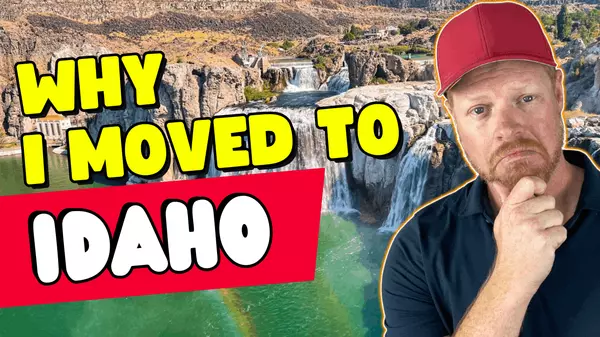
Are you considering a move to Boise, Idaho? One of the most crucial factors to consider is the cost of living. In this blog post, we'll break down the expenses you can expect, from housing to utilities, comparing them to California. Housing Costs: Mortgages and More The first major expense to consider is housing. We'll explore mortgage rates, home prices, and how they compare to California. Whether you're a first-time homebuyer or upgrading, we've got the numbers you need. Utilities: Saving Money in Idaho Next up, let's talk utilities. Discover how much you can save on gas, electricity, water, and sewer bills compared to California. We'll also discuss the impact of home efficiency and irrigation systems on your costs. Homeowners Associations and Additional Fees HOA fees can vary widely, so we'll discuss what you can expect to pay and what amenities you might receive for those fees. From minimal costs to luxury amenities, we'll cover the spectrum. Grocery Expenses and Sales Tax Grocery shopping is a daily necessity, so we'll break down the costs and discuss how they compare to California. Plus, learn about Idaho's sales tax on groceries and its impact on your budget. Property Taxes: Idaho's Levy-Based System One of the most confusing topics for newcomers is property taxes. We'll simplify the process and explain how Idaho's levy-based system works, including exemptions and rates in different areas. Homeowners Insurance and Vehicle Registration Protecting your investment is crucial, so we'll discuss homeowners insurance costs and what factors influence them. Plus, find out how much you'll pay for vehicle registration in Idaho compared to California. Navigating the Cost of Living in Boise With a comprehensive overview of the cost of living in Boise, Idaho, you'll be better prepared to make an informed decision about your move. If you're ready to take the plunge or just want more information, reach out to us for assistance. Whether you're days or years away from moving, we're here to help. Reach out via phone, text, or email for personalized assistance with your relocation to Boise, Idaho.
Read More
Categories
Recent Posts
